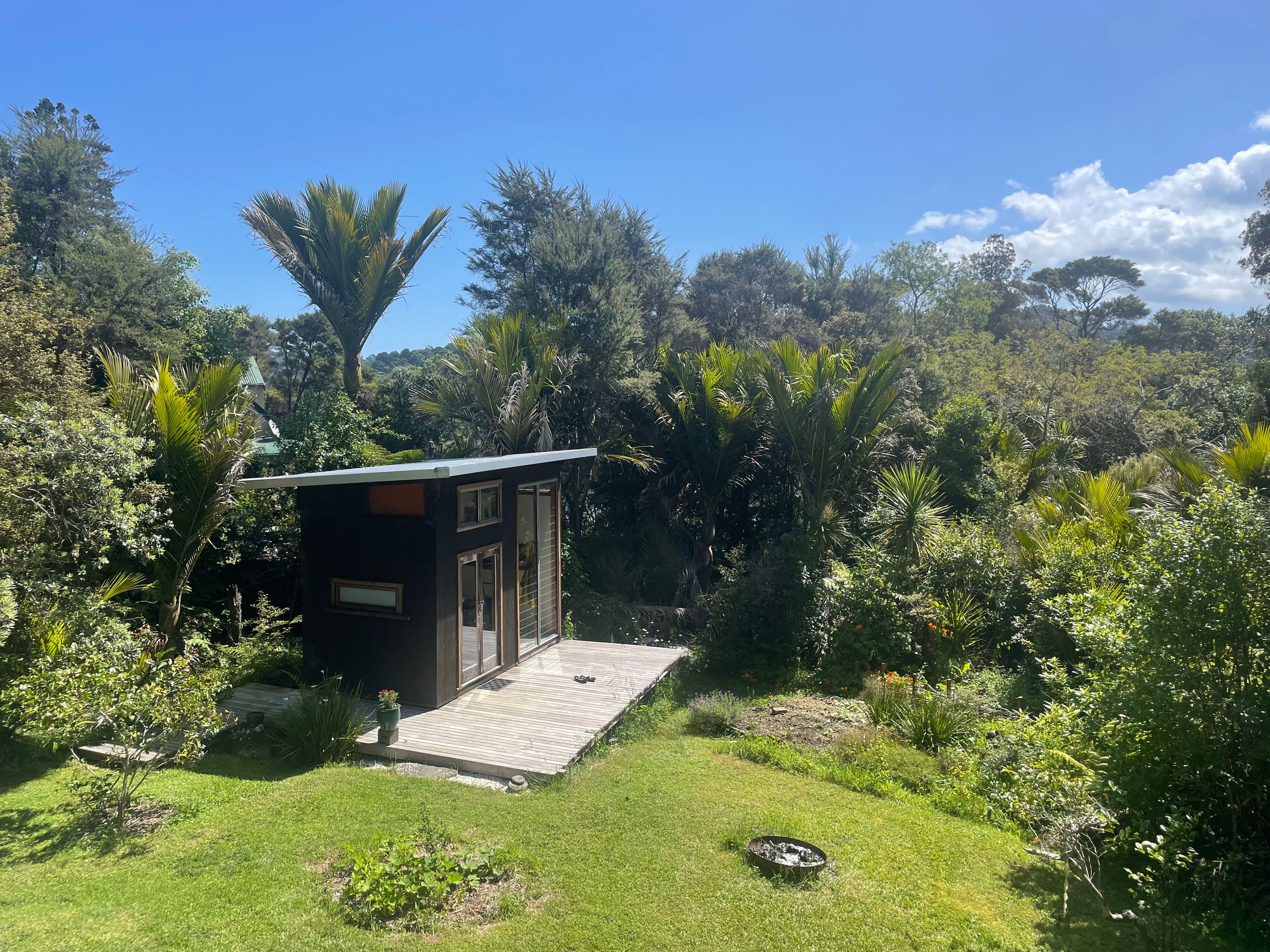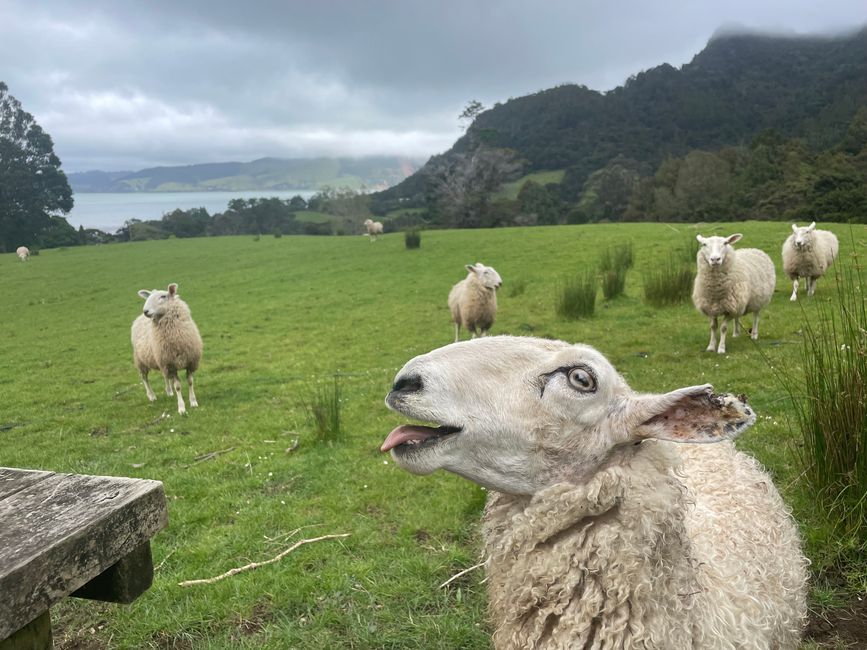volcanic New Zealand at Rotorua
Verëffentlecht: 31.01.2023
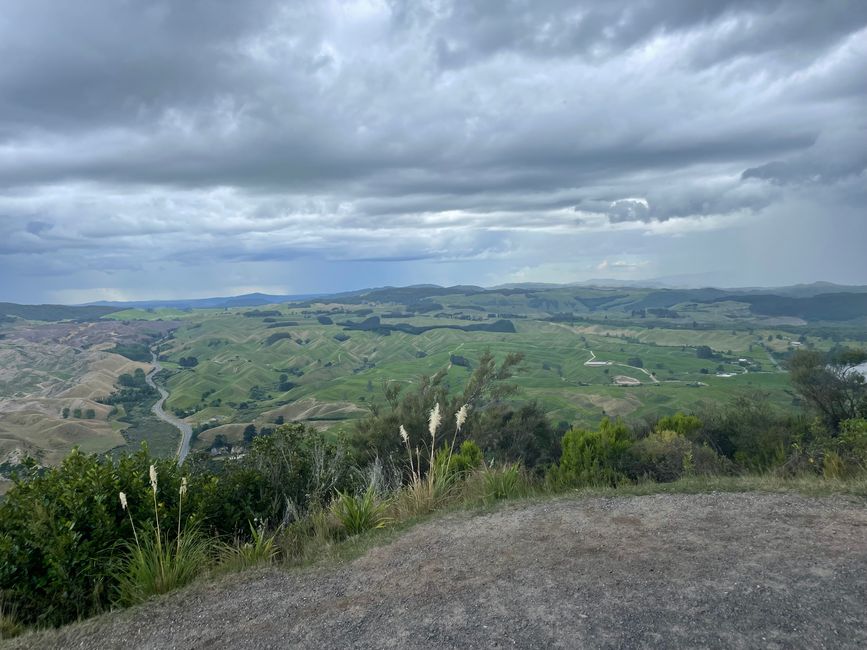
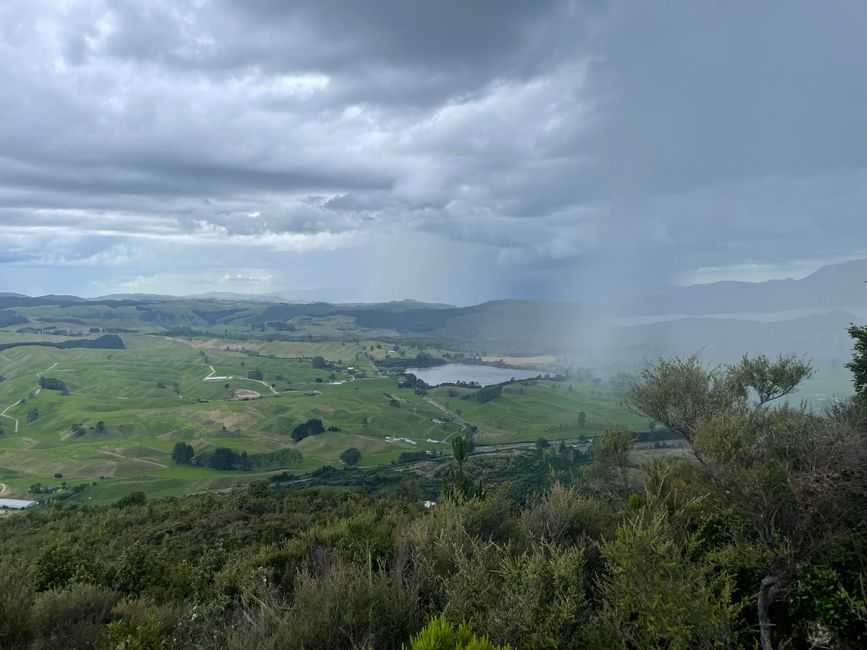
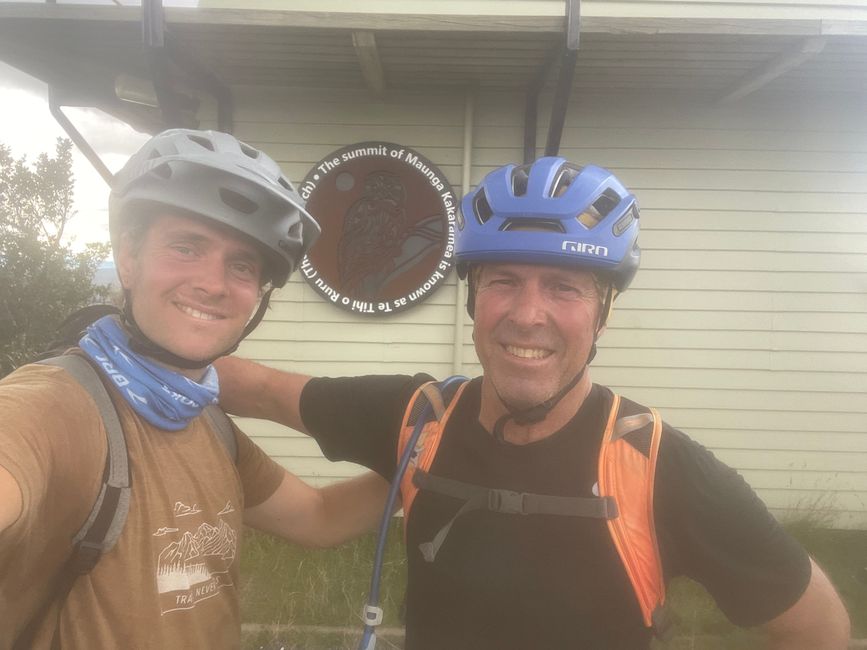
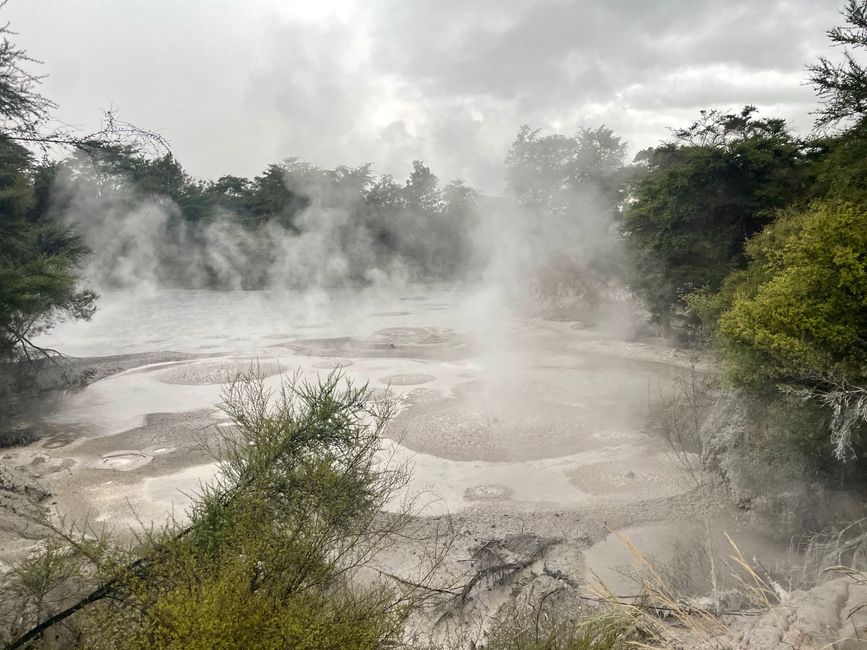
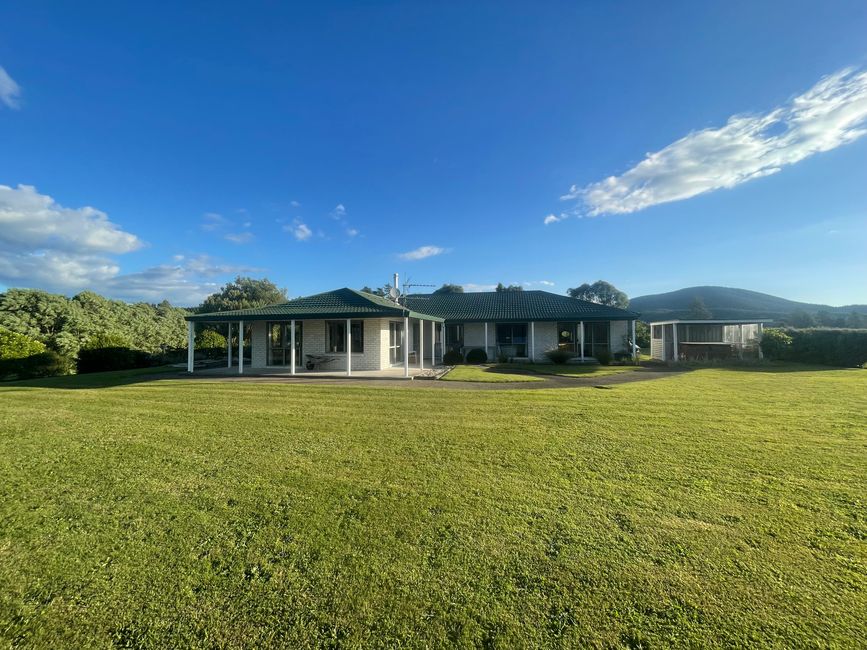
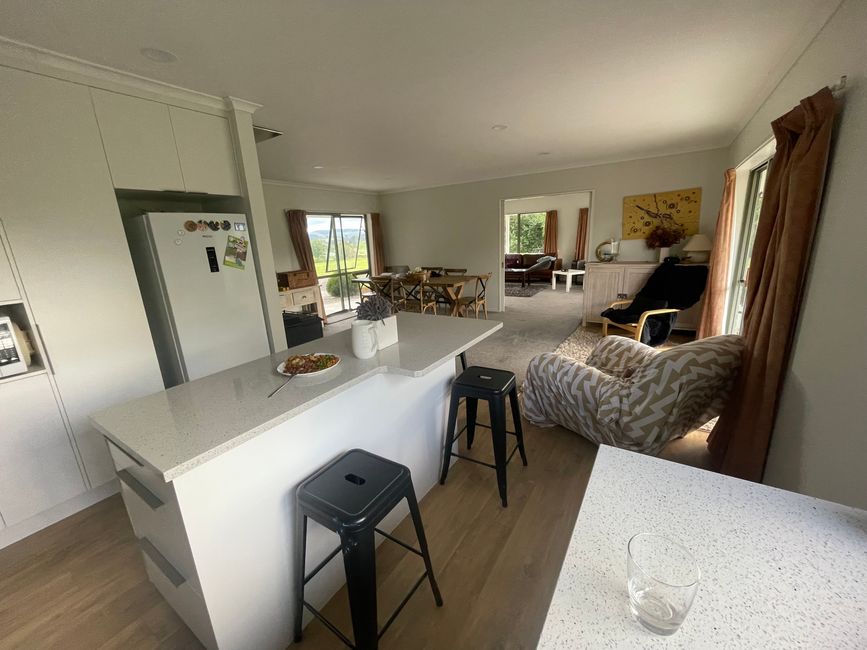
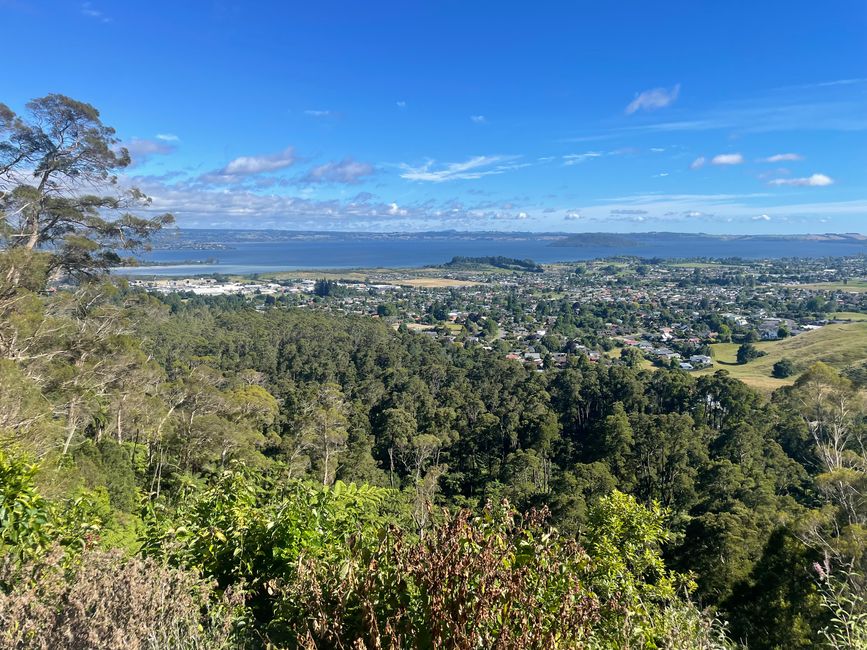
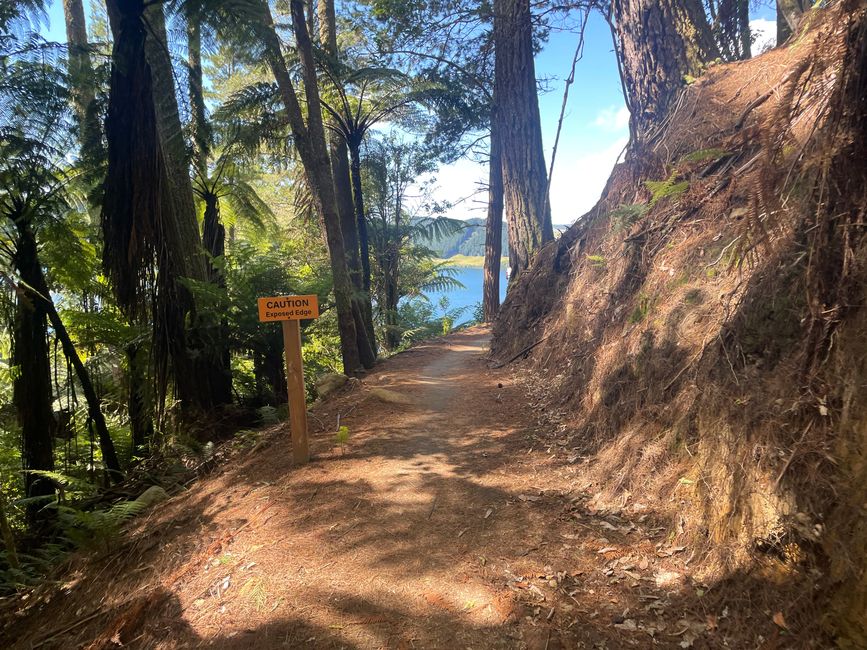
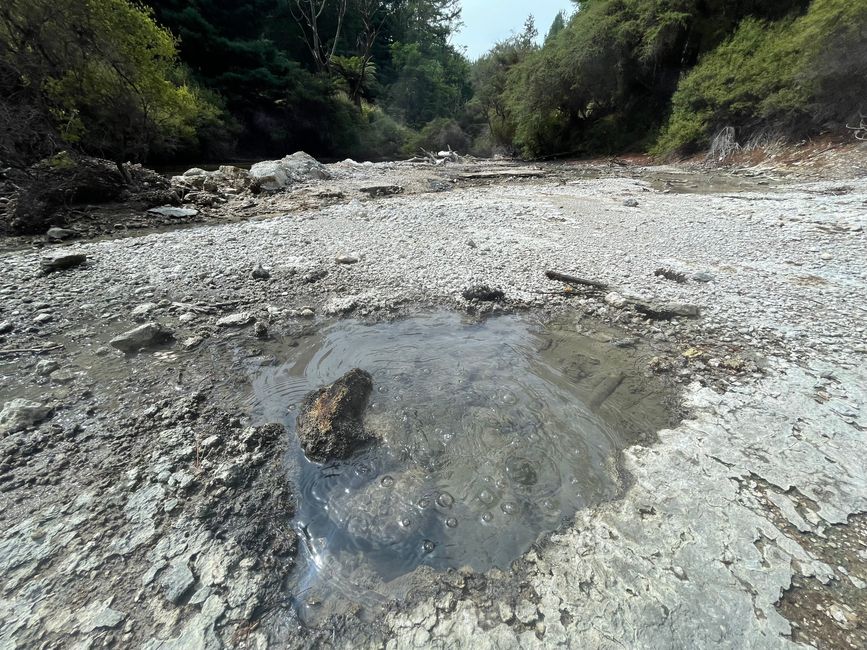
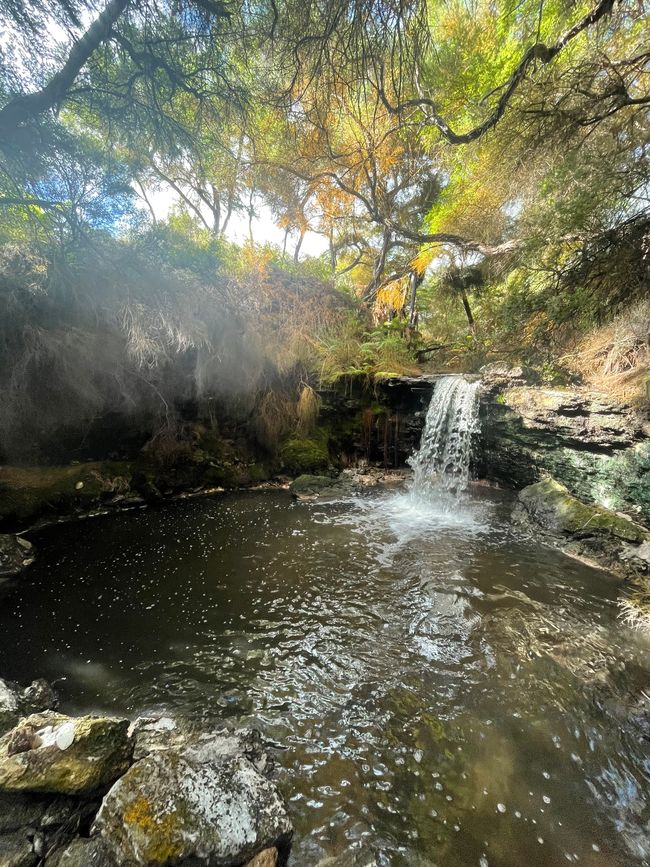
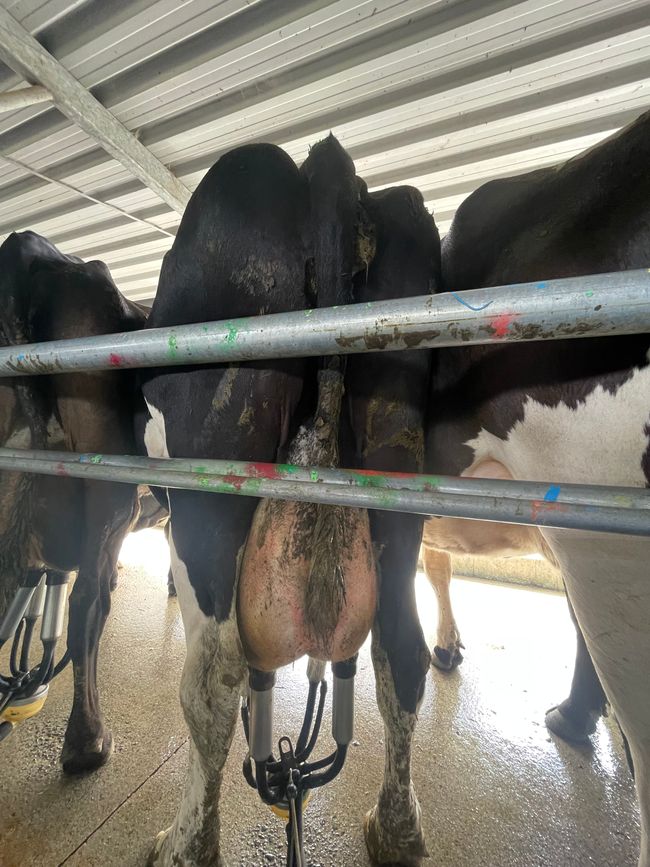
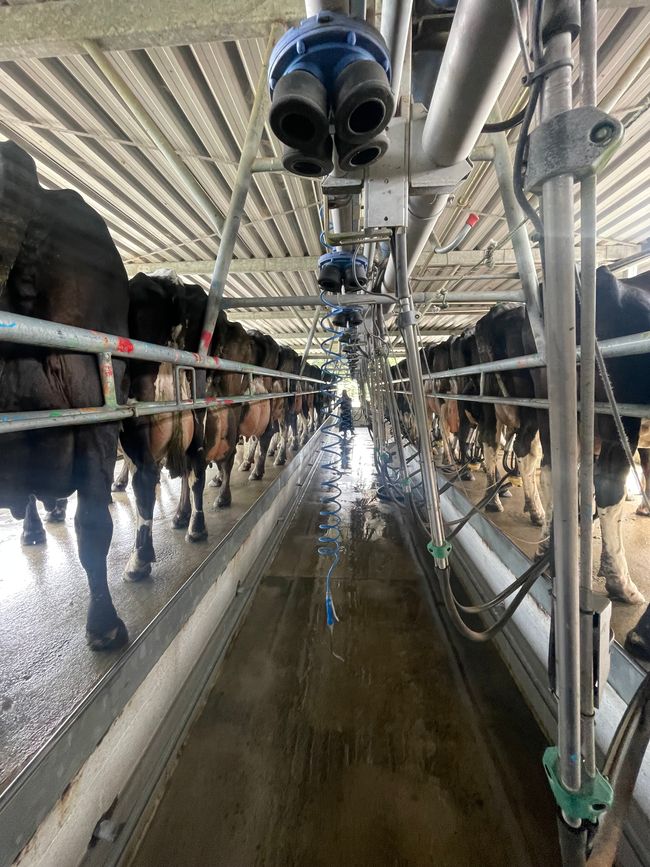
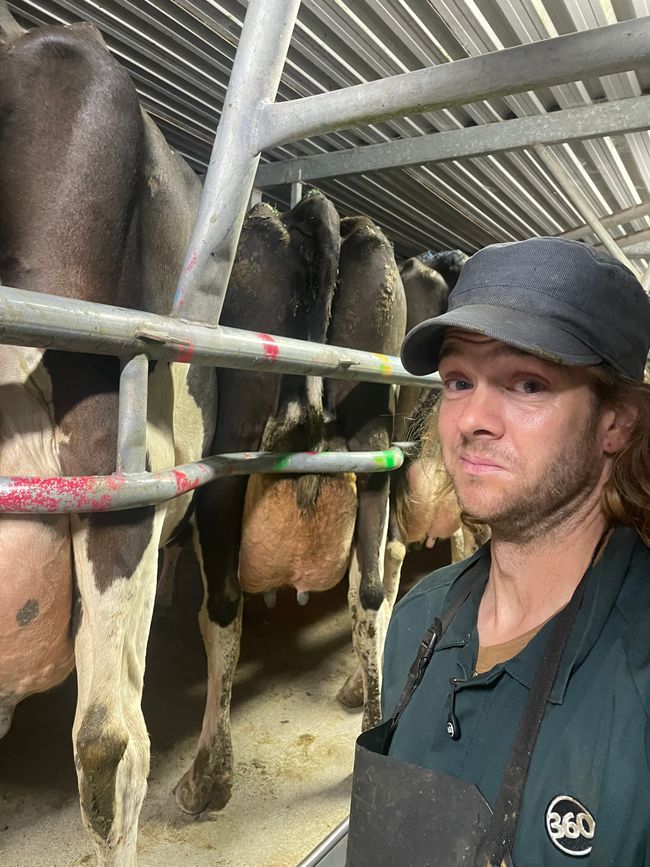
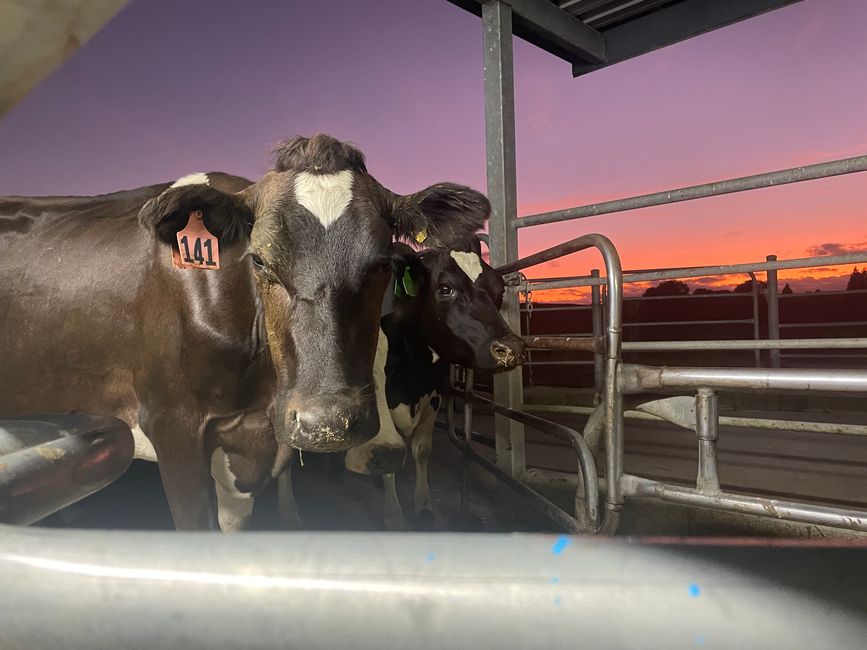
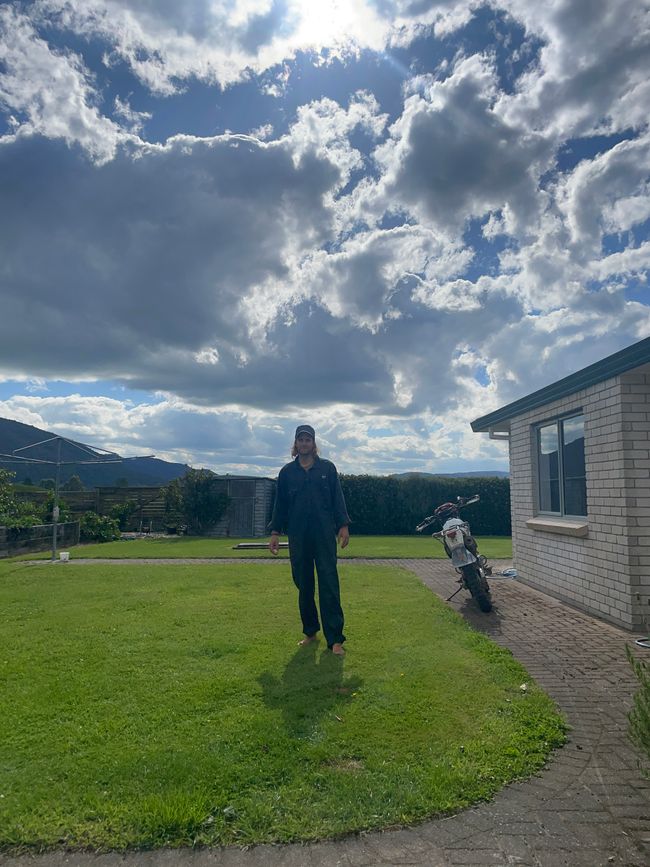
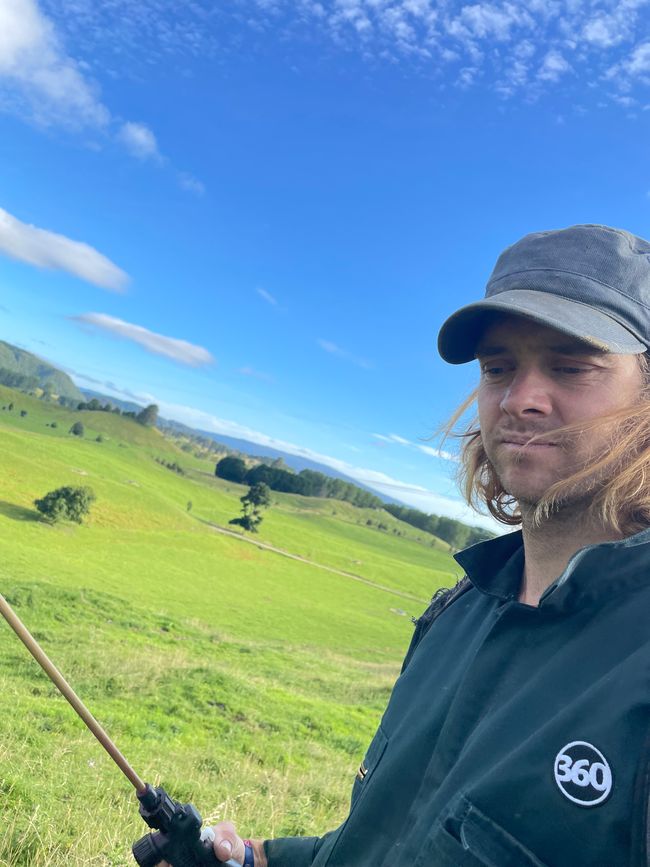
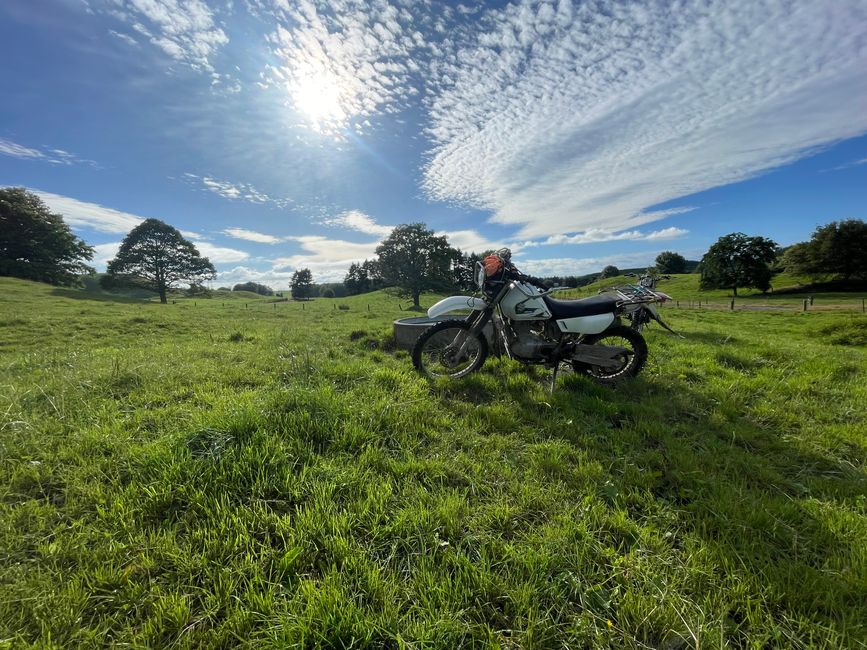
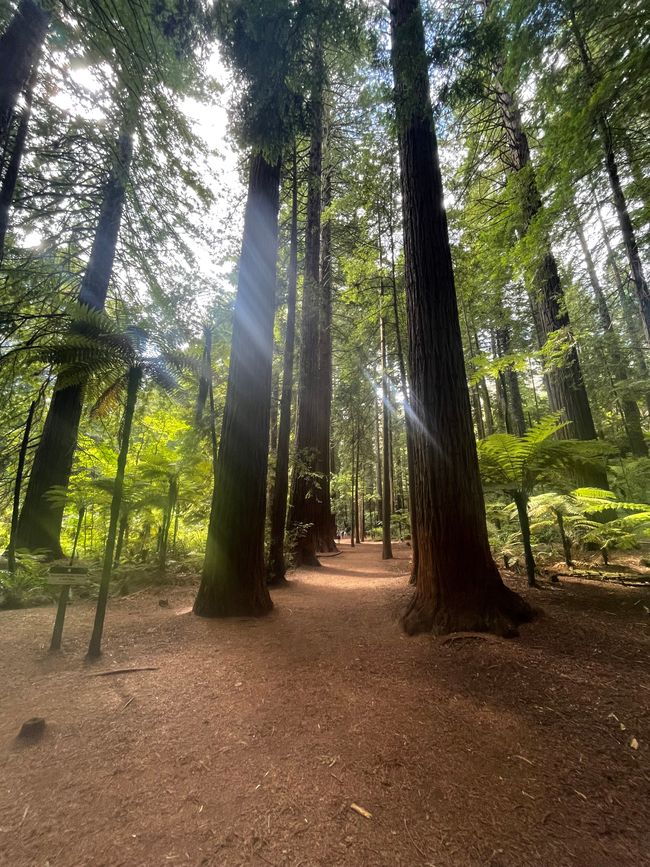
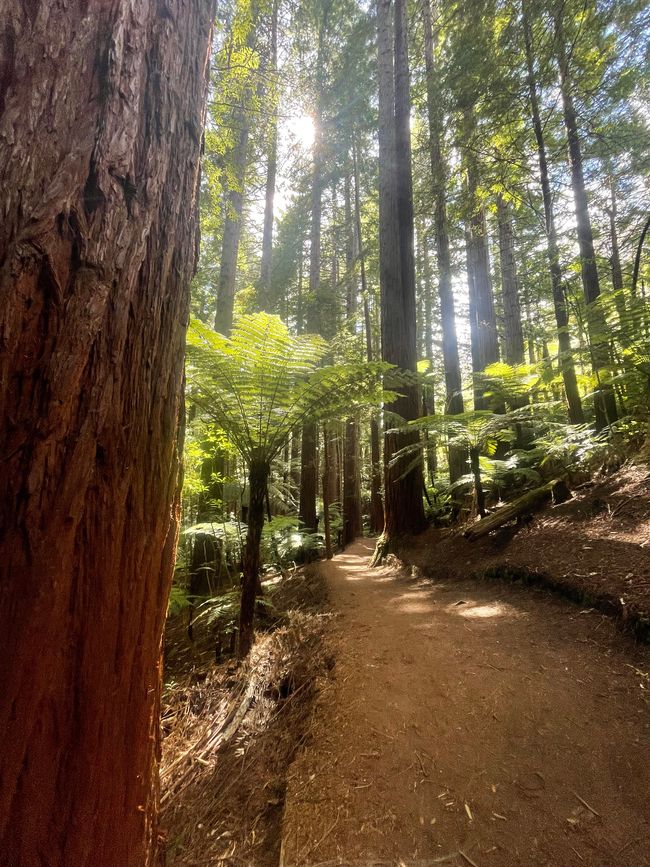
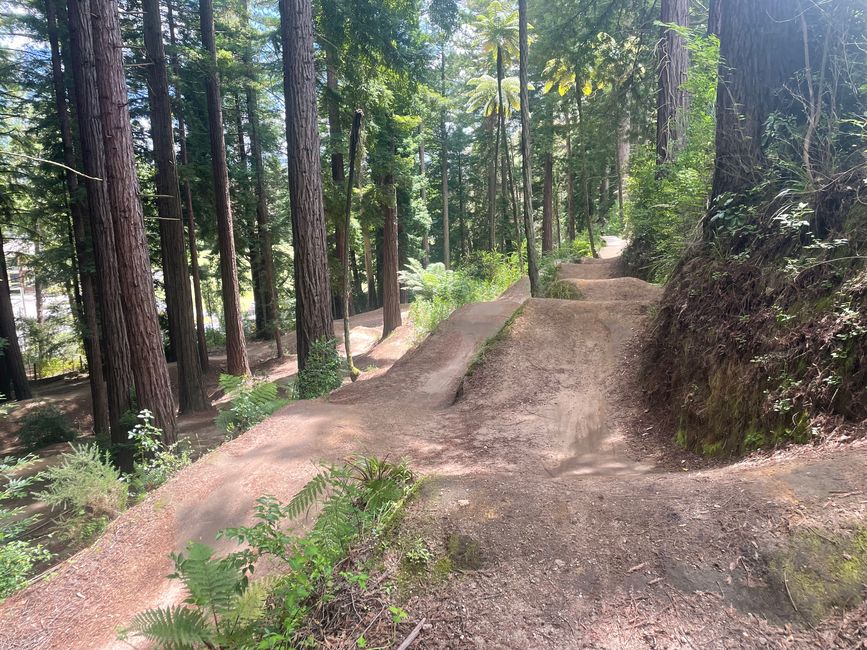
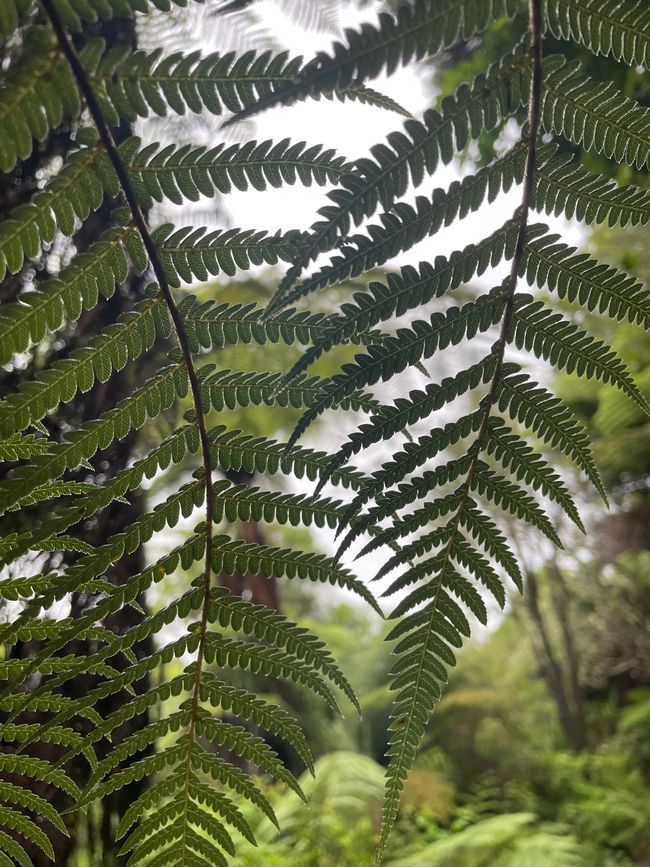
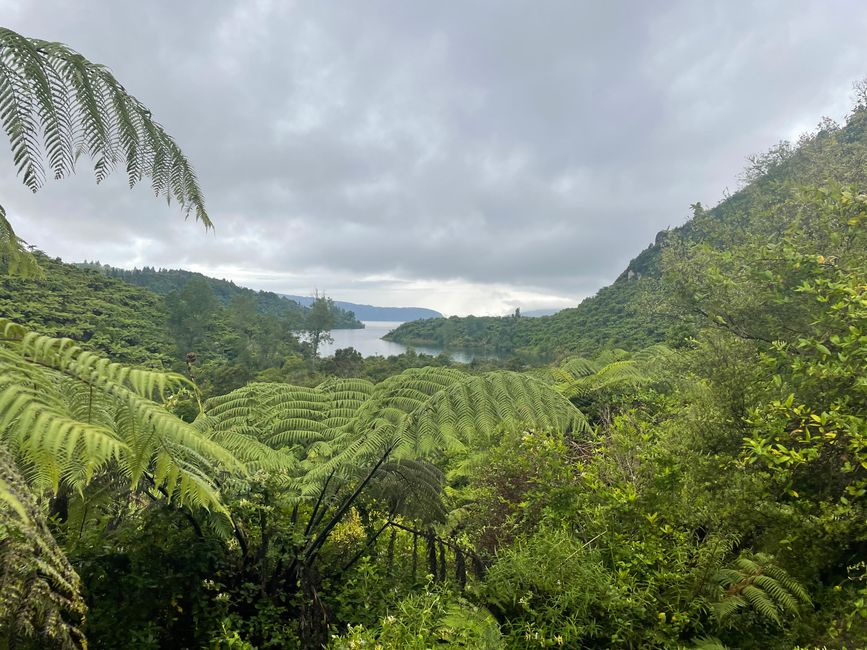
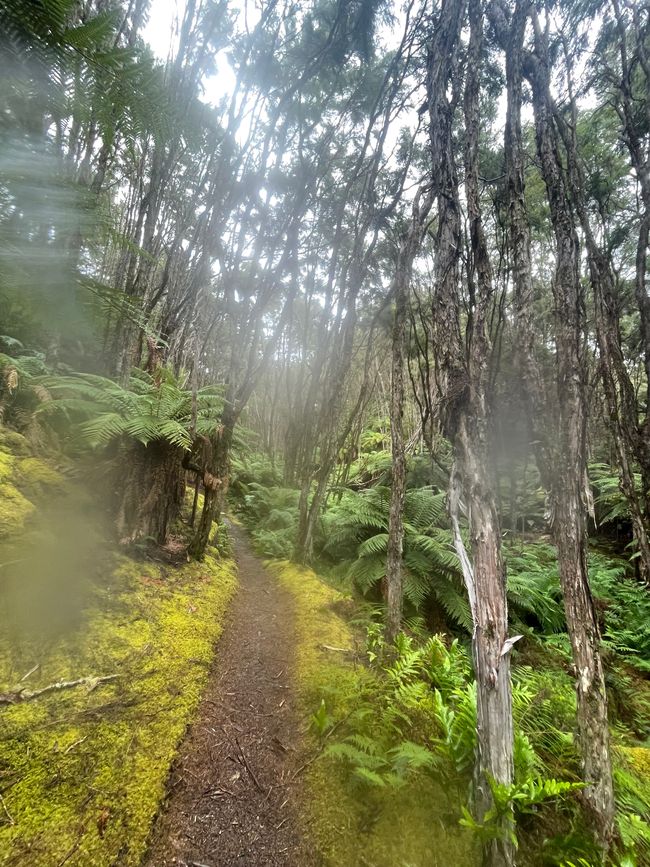
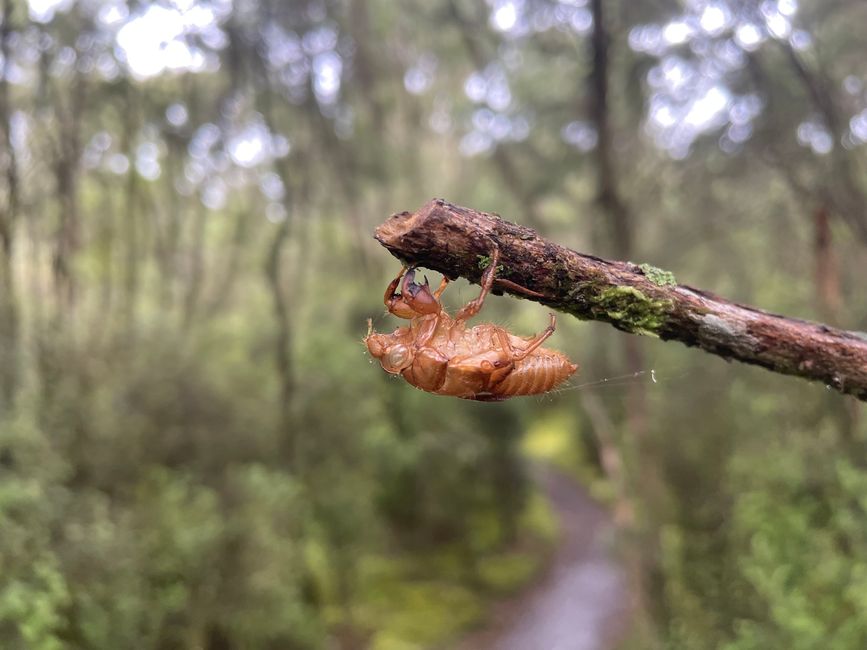
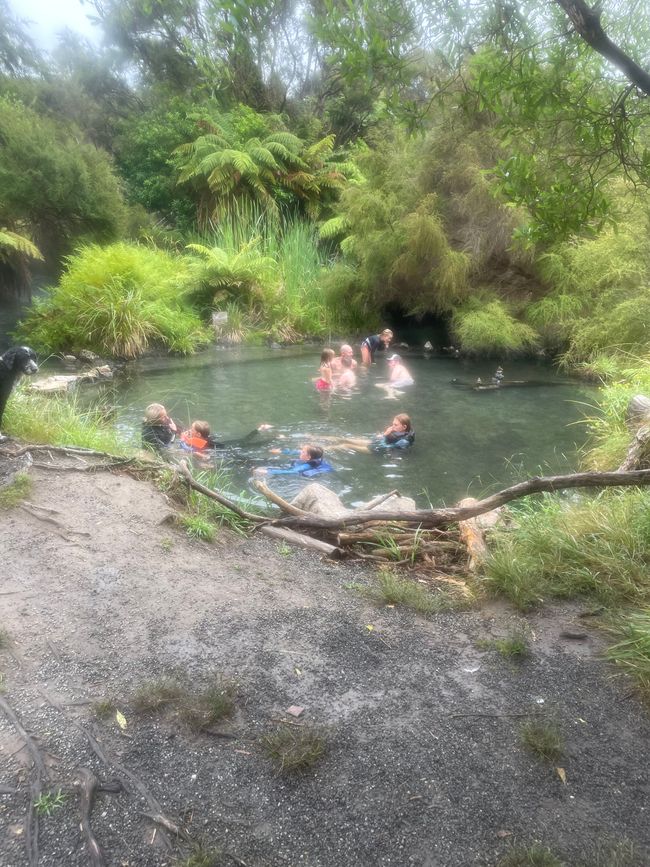
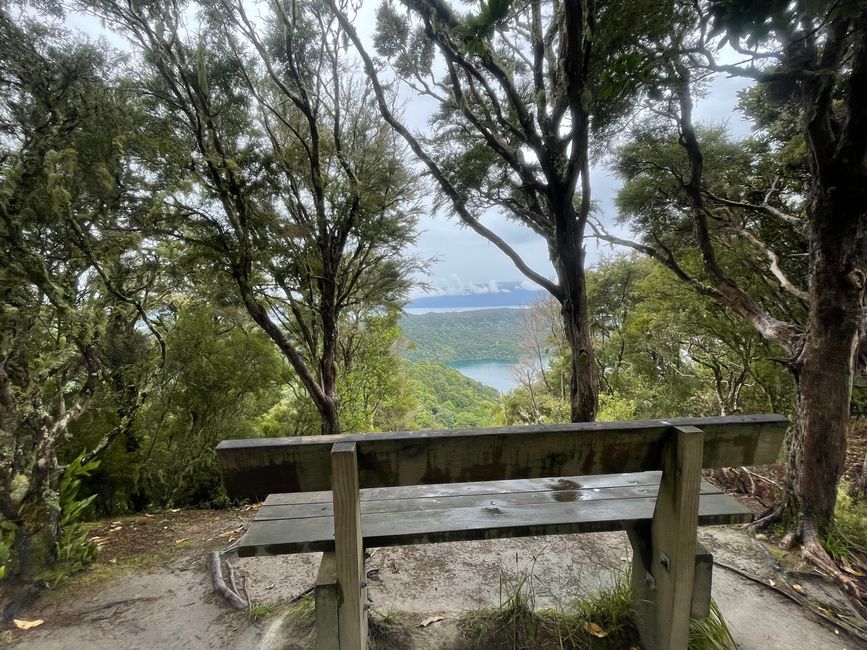
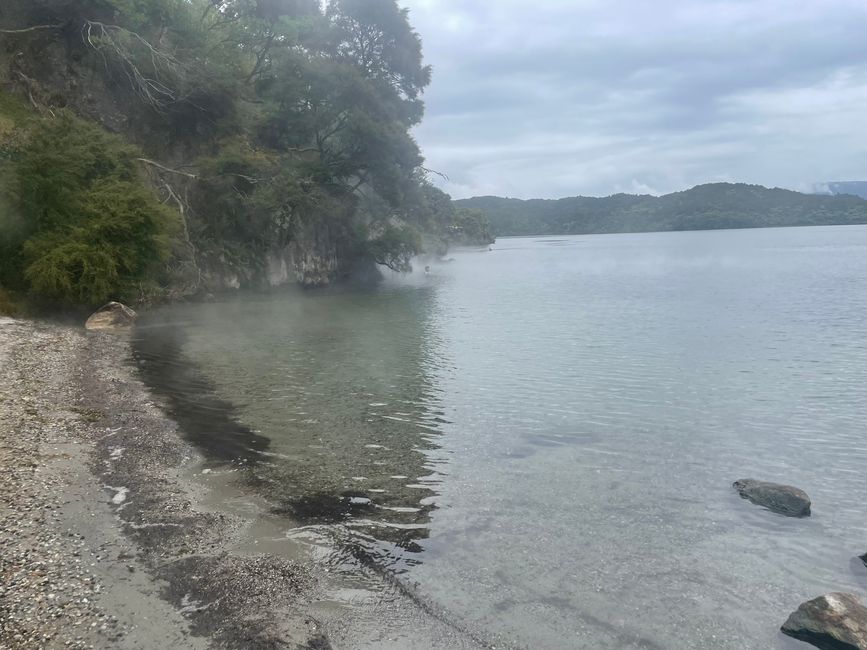
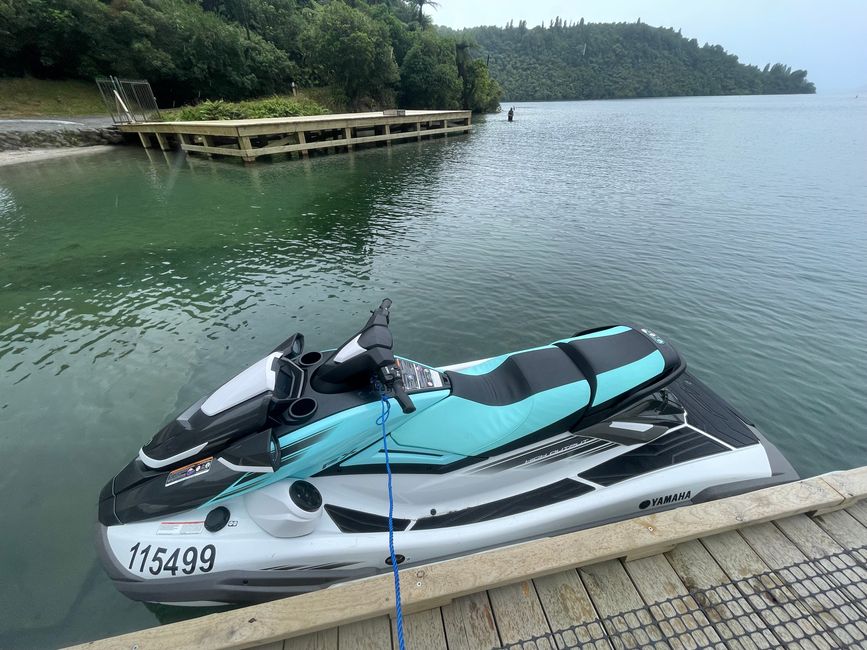
Abonnéiert Iech op Newsletter
The last few kilometers to Trev and Jacqui, once again a Maori picked me up. Financially, most of them don't seem to be doing well, but their warmth, authenticity, and friendliness never seem to have been lost culturally. He drove me right to the doorstep of the house situated on a small hill, where I saw Trev sitting at the table. The first contact was a bit strange and distant. He seemed reserved and a bit grumpy. After about 5 minutes, he warmed up and we had a nice conversation. Then he took me to his stable with various bicycles, from which I could choose one. I opted for a solid hardtail mountain bike. Shortly afterward, I found myself in the saddle and we took off on our bikes. He initially pushed me up his local mountain, from where you had a great view. Then we went down a challenging single trail on the other side of Rainbow Mountain. There he showed me bubbling mud pools that are over 100 degrees hot, a warm water river, and a hidden pool with a small waterfall that was about 38 degrees warm. On the way back, it started pouring rain. Initially, it was an uncomfortable feeling for me, but Trev, who continued to push my thighs to the limit, was filled with joy. His mood was contagious and so we cycled back, completely soaked, dirty, and full of euphoria, looking forward to a warm shower.
In this region, geology is something special. It is one of the most active volcanic centers on Earth, where the formation of New Zealand is most apparent due to the collision of the Pacific and Australian plates. Therefore, all the hot springs, steaming mud pools, and geysers are nothing more than signs that this area was founded on a massive volcano. Also, the distinctive and unmistakable smell of rotten eggs permeating this region.
But Rotorua is not only known for its hot springs, geysers, and stench, but also for its many bike trails. So, it is a paradise for mountain bikers, and regular competitions are held here with the world's best cyclists. In my free time, I took occasional bike rides, but I preferred less demanding routes, such as through the Redwood forest in Rotorua or a popular, comfortable, and very scenic trail called Forest Loop, with beautiful views, through different forests, and past three lakes.
Another excursion during that time was a hike on the Tarawera Trail to a beach on Lake Tarawera, where there were hot springs and a warm pool on the way there. Unfortunately, I had no waterproof companion with me, and the temperatures were around 15 degrees, which made me feel a bit cold. So, I was thrilled when I passed by the pool and could warm up in a very pleasant bathtub temperature. When I arrived at the beach, I also wanted to relax there on the edge of the lake, where it was steaming and believed to have hot springs. But they were so unpredictable and could be dangerously hot, depending on the slight currents. Shortly afterward, Trev picked me up with his jet ski, and we dashed back over the lake at a speed of 90 km/h to a parking lot. What a ride. To top off the day, he let me ride the jet ski over the lake once again. I had genuine respect and reduced speed even at the smallest waves. But Trev, sitting behind me, kept telling me that speed was my friend and encouraged me to keep going... It was a nice experience, but I think I'm more of a fan of leisurely kayaking.
On another day, we drove with this horsepower monster to another lake. We had a long rope and a tire with us. So, I fulfilled another childhood dream as he pulled me lying on the tire over the lake... It was nice, but I would have preferred to share the fun with friends rather than Trev and Jacqui.
At the age of 60, Trev was a bundle of energy, trying to offer me and show me many things. I was grateful for that. But he also had another side. In terms of work, he was very demanding, and I worked on average 2-3 hours more per day than he initially expected from me. But I also felt somewhat guilty and did what he asked of me. The experience of milking was also quite interesting.
He had 300 dairy cows and 150 calves on an area of 170 hectares, divided into 40 paddocks. While most of the calves were sold for slaughter, about 20 were kept in a pasture to become dairy cows at the age of 2. The cows changed paddocks every day and were milked twice a day at the milking station. The first milking started at 5:30 a.m., and the second milking occurred in the afternoon at 3 p.m. Trev had two employees, Jury and Crispen, both from the Philippines. One of them was also responsible for leading the animals from the pasture to the milking station. So, their shift started even earlier in the morning. Each of the employees had a small motorcycle to cover the distances to the pastures and the milking station. And so, every morning before sunrise, I dashed to the milking station on a motorcycle and helped with the milking. In my naive imagination, I had imagined milking to be much more romantic and had images of Heidi, the herdsmen, and contented and happy cows in my mind. But reality brought me back to earth and shattered my worldview once again. The cows were crowded into a small waiting area, where they were tightly packed and waited for the gates to the milking stalls to open. From behind, the cows were pushed forward toward the milking system by an automated fence. As cows have some bladder problems, they peed and pooped on each other's heads, legs, and especially on their own tails, which also became unpleasantly noticeable during the milking process. The milking area was essentially a long corridor with the milking machines in the middle, employees moving around, and the cows standing with their rear ends facing the corridor. The cows were obedient because they were fed during the milking process. So, as the milker, one moved in the slightly lower trench and quickly attached the milking cups to the udder's teats on the left and right, and after milking, sprayed an iodine solution on the teats to prevent infections. In the trench, one was completely at the mercy of the cows' incontinence, and liquid, transparent, mushy, and brownish substances splattered from all directions. It's hard to describe how you feel when you are at eye level with the upper edge of the udder, slightly pressed for time, and at risk of getting a shower of excrement if the sphincter on the floor above you opens slightly. Trev said it didn't happen very often, and luckily, I was spared a complete shower. So, I have the utmost respect for the people who have to move around in this anti-trench of excrement day in and day out. But I also felt a lot of empathy for the cows, which were then driven away from the milking positions again with some rather rough methods to make room for the next group.
An interesting observation from a psychological perspective was that some cows, when they arrived at their milking position, started to let their milk flow without any external influence. Does this have something to do with conditioning? It was also obvious that as soon as one cow started to pee, others followed suit. Was it due to the splashing sound, which triggered the peeing reflex in other cows?
Further facts: On average, a cow produces 25 liters of milk per day. An incredible amount when you imagine it in bottles and consider how much milk you consume on average per day (cheese, quark, yogurt, butter). Overall, Trev or his cows produce an average of 8,000 liters of milk per day, which is collected by a large company and then sold again. Most of the products produced in this country, like most things, are sold abroad. I was also shocked by the use of glyphosate or pesticides in general. Different types of grass are planted on the entire fields, so there are no naturally "beautiful meadows." Different weeds grow on each meadow, which are killed with a specific pesticide. The cows are then allowed to continue grazing on this pasture during that time. Approximately every 15 years, when the weeds can no longer be controlled by specific pesticides, a meadow is completely destroyed by an all-purpose pesticide, a new seed is sown, and the cows are kept away from the pasture for 2 weeks. Absolutely crazy how humans control everything and try to control everything. I suppose delving into the potential impacts of all of this would be beyond the scope of a travel report. But it was somewhat shocking to have witnessed these processes up close. At this point, I would like to recommend a film that my brother recommended me: "Kiss the Ground." (https://kissthegroundmovie.com/)
And somehow, New Zealand is always portrayed in our media as super green and sustainable. Unfortunately, I can't confirm that. Not only does it seem like everyone here drives a big pickup truck or an SUV, but also pesticides are used everywhere, even in private gardens, as standard practice. And, as Trev mentioned, even more pesticides are used in the production of kiwis or other fruits, which are then sold worldwide as premium products. An explanation for why the country is given the label "green" is that it is sparsely populated relative to its size and has many forests and green areas. So, there are 5 million inhabitants in an area three-quarters the size of Germany. It would be interesting to compare the ecological footprint of each resident of the respective states... written by someone who flew to the other end of the world by plane and pseudo-morally wields a club.
So the time with Trev was coming to an end, and I made my way to the far north to Kerikeri, where I followed an invitation from the directors of the Buddhist center in Auckland. They admired my amateurish gardening and offered me accommodation and some money for taking care of their very overgrown garden.
I found the trip there exciting, where I was confronted with various people and their stories again. Joy, Crispen's wife, took me from Rotorua and told me their emigration story and how they came into contact with Trev. A kind, caring, and lovingly eccentric woman with Maori roots then drove me from Rotorua to a good hitchhiking spot. There, I was picked up by a passionate fly fisherman whose eyes didn't stop shining as he told me his story of how he got into fly fishing and occasionally gives others insights into his world of experience. And Chris took me as far as Auckland. He is my age and has 5 vehicles in his garage. In recent years, he has been plagued by health and family misfortunes, but he still remains incredibly friendly, generous, and open. When I arrived in Auckland, I decided to continue by bus due to the heavy rain. Fortunately, the bus was 10 minutes late, so I managed to catch it at the last second. And as chance would have it, I sat next to a German who had emigrated 10 years ago to start a new life here.
And because the summer is now described as one of the rainiest in decades, I am now sitting in my cozy little apartment, waiting for better weather to go on a kayak trip, which Stephen and Kathy have provided me with.
Abonnéiert Iech op Newsletter
Äntwert

Reesberichter Neiséiland
